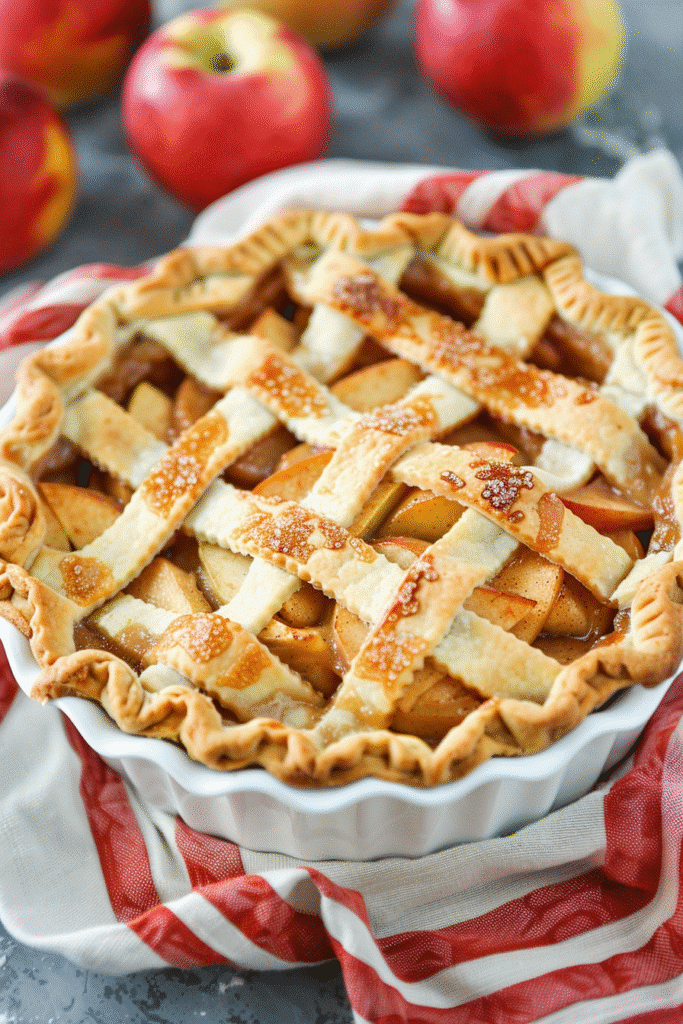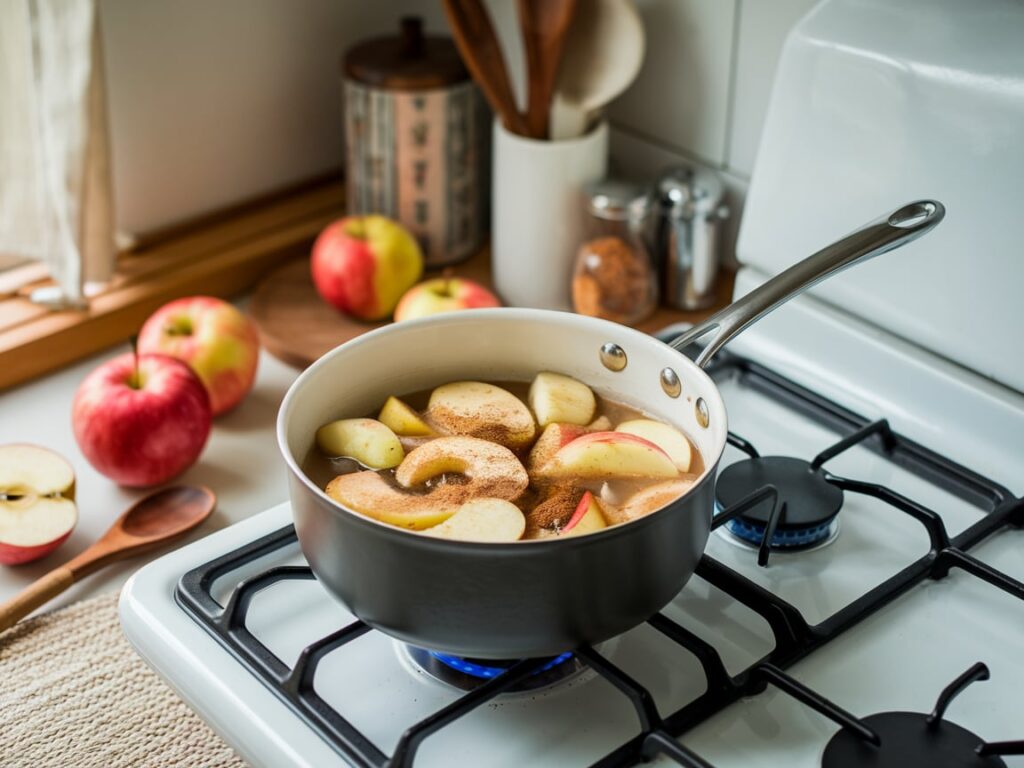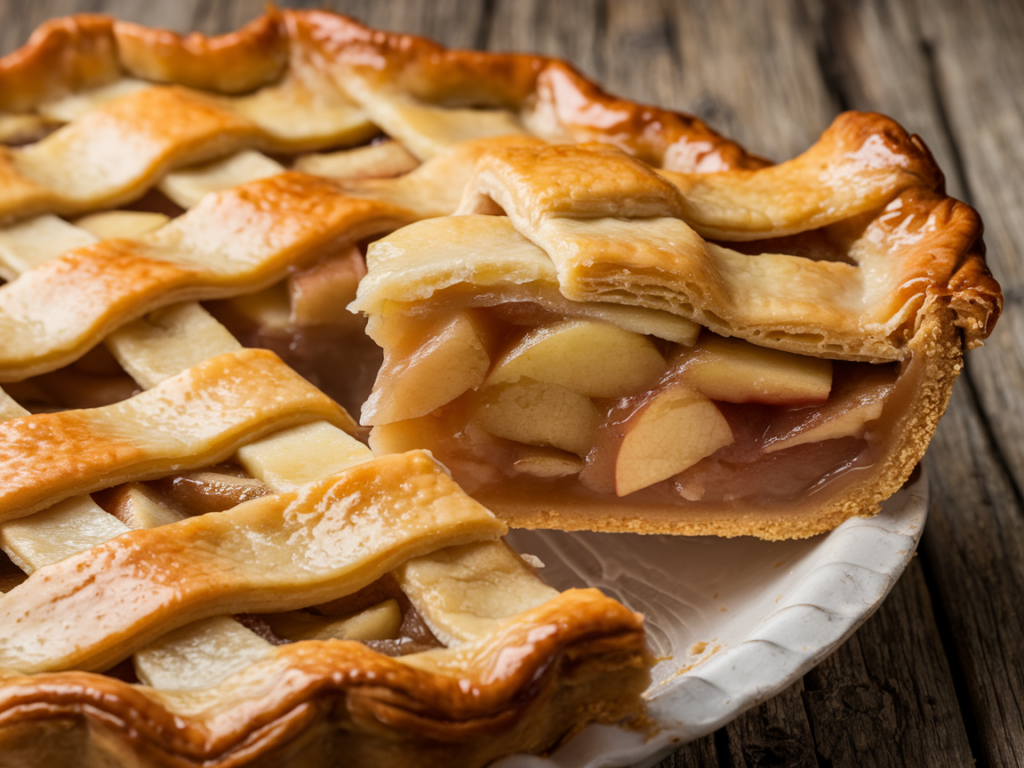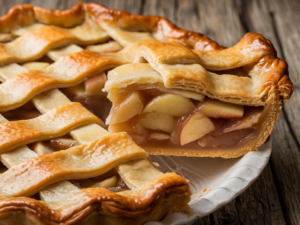
A Pie Crust Full of Memories
Table of Contents
My grandmother’s apple pie was legendary. Every autumn, she’d spend hours peeling orchard-fresh apples, simmering them with cinnamon until they sang, and layering them into buttery crusts. But here’s the kicker: she never pre-cooked her filling. “The apples need to dance in the oven, Emma,” she’d say, flour dusting her apron like snow. Fast-forward to today I’m a mom of two, juggling work and school runs, and while I adore her philosophy, I’ve learned that sometimes, a little pre-cooking magic saves the day (and the sanity!).
At Spedy Recipes, we’re all about honoring tradition without the clock ticking louder than your oven timer. So, let’s settle the debate: Should you pre-cook apple pie filling? Spoiler: The answer’s as layered as the pie itself.
Grandma’s Wisdom vs. Modern Hacks: The Great Filling Debate
The Case for Raw Apples (Nostalgia’s Secret Ingredient)
Grandma swore by raw apples. Why?
- Texture: “They stay firm, not mushy!”
- Time: Skipping a step meant more moments for stories (and sneaking dough scraps).
- Tradition: Her recipe was etched in 1952 no tweaks allowed!
But here’s the truth: her apples were perfectly tart and tiny, ideal for baking whole. Today? We’re often stuck with giant, ultra-sweet grocery store varieties.
Why Busy Cooks Lean Toward Pre-Cooking
- Control: Pre-cooking tames unruly apples, preventing a soggy crust.
- Speed: Simmer filling while prepping dough multitasking wins!
- Flavor Boost: Caramelize those sugars early for deeper, cozier taste.
Spedy Verdict: Do a hybrid hustle! Partially cook your filling to save time and keep that rustic charm.
The Speedy Solution: “Half-Baked” Filling (Grandma-Approved!)
This method keeps the spirit of tradition but cuts the clock:
30-Minute Pre-Cook Hack
- Slice Apples Thin: No peeling needed (skin adds fiber and sass!).
- Sauté 5 Minutes: In butter, brown sugar, and cinnamon. Just until slightly tender.
- Cool While Rolling Dough: Multitask like a pro!
Why It Works:
- Reduces oven time (no exploding juice geysers!).
- Keeps apples firm-ish, honoring Grandma’s “dance in the oven” rule.
Family Fun: Let kids sprinkle the cinnamon their “measurements” might surprise you (in the best way).
Recipe: Speedy Skillet Apple Pie Bars
(Makes 12 bars | Prep: 20 min | Bake: 25 min)
Uses hybrid filling for maximum flavor, minimum fuss!
Ingredients: For apple pie filling
- Filling:
- 4 apples (thinly sliced, skins on)
- 2 tbsp butter
- 1/4 cup brown sugar
- 1 tsp cinnamon
- 1 tbsp lemon juice (to prevent browning)
- Crust:
- 1 sheet pre-made puff pastry
- 1 egg (for glaze)
- Topping:
- 1/2 cup oats + 2 tbsp honey
Steps: For apple pie filling

- Sauté Filling: Cook apples in butter, sugar, and cinnamon for 5 minutes. Let cool.
- Layer: Unroll pastry into a skillet. Spread filling, top with oats and honey.
- Bake: 25 minutes at 375°F. Slice into squares!
Spedy Story: My daughter once swapped cinnamon for chili powder. We called them “Texas Fire Bars” and pretended we meant to do it. 🤠
Common Pre-Cooking Pitfalls (And How to Dodge Them)
- Over-Softening Apples: Sauté just until bendy, not limp.
- Soggy Bottoms: Drain excess juice post-sauté (save it for pancake syrup!).
- Sugar Overload: Taste as you go! Modern apples are sweeter than Grandma’s.
Turn Pie-Making Into Family Playtime
- Apple Art: Save a few raw slices for kids to arrange on top.
- Dough Doodles: Use cookie cutters on pastry scraps for mini pie toppers.
My Family’s Ritual: We host “Pie Face Fridays” whoever makes the messiest pie gets to lick the spoon! (Spoiler: We all win.)
Join the #SpedyPieChallenge
This Month’s Twist: Try a savory version! Think cheddar-apple or bacon-maple. Share your creation on Instagram (@SpedyRecipes) for a chance to win:
- Prize: A “Pie Night Kit” with my favorite tools (includes a speedy jarred filling hack guide!).
Speedy Skillet Apple Pie Bars
Equipment
- Skillet
- Stovetop
- Oven
Ingredients
Apple Pie Filling
- 4 apples thinly sliced, skins on
- 2 tbsp butter
- 1/4 cup brown sugar
- 1 tsp cinnamon
- 1 tbsp lemon juice to prevent browning
Crust
- 1 sheet pre-made puff pastry
- 1 egg for glaze
Topping
- 1/2 cup oats
- 2 tbsp honey
Instructions
- Sauté Filling: Cook apples in butter, brown sugar, and cinnamon for 5 minutes until slightly tender. Let cool.
- Layer: Unroll puff pastry into a skillet. Spread the cooled apple filling over the pastry. Top with oats and drizzle with honey.
- Bake: Preheat oven to 375°F (190°C). Bake for 25 minutes until golden brown. Slice into squares and serve.
Notes
FAQ: Apple pie filling
1. What do I need for apple pie filling?
To make the perfect apple pie filling, you’ll need fresh apples, granulated sugar, brown sugar, cinnamon, nutmeg, lemon juice, a pinch of salt, and a thickening agent like cornstarch or flour. These ingredients combine to create a sweet, spiced filling that’s both rich and comforting.
2. Should I cook apples before putting in pie?
Yes, cooking apples before placing them in the pie helps release excess moisture, prevents a soggy crust, and ensures even texture and flavor. It also reduces shrinkage during baking, giving you a fuller, more consistent filling.
3. What is the best thickener for apple pie filling?
Cornstarch and Instant ClearJel are considered the best thickeners for apple pie filling. They provide a glossy, smooth texture without altering the flavor. Tapioca and flour are also options, but may affect the appearance or taste slightly.
4. How to cook apples for apple pie filling recipe?
To cook apples for pie filling, sauté peeled and sliced apples with butter, sugar, lemon juice, cinnamon, and your chosen thickener. Cook over medium heat for about 10 minutes until slightly softened and the mixture is thickened. Let it cool before using in your pie crust.

Love cozy homemade treats like this? Follow me on Pinterest for more quick & delicious recipes your family will love! 🍎🥧
Conclusion: Your Pie, Your Rules
At the end of the day, pre-cooking isn’t about betraying tradition it’s about making it work for your family’s chaos. My grandma’s pies were perfect because they were made with time I don’t always have. But you know what? My kids won’t remember whether the apples were pre-cooked. They’ll remember the flour fights, the sticky counters, and the way the kitchen smelled like love.
As she’d say, “The best pies are the ones shared, not the ones perfected.” So, pre-cook or don’t just make it yours.
For a comprehensive guide to tackling more intricate recipes, you might enjoy the article on How to Cook Thanksgiving Dinner From Start to Finish.
- How to Make Cheap Meals Without Sacrificing Flavor
- Meal Plans with Shopping Lists
- Extreme Poverty Meals & Dinners for a Tight Budget
- Cheap Summer Meals: How to eat on $80 a week
- Homemade Hamburger Helper

